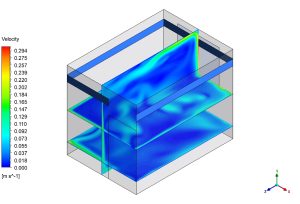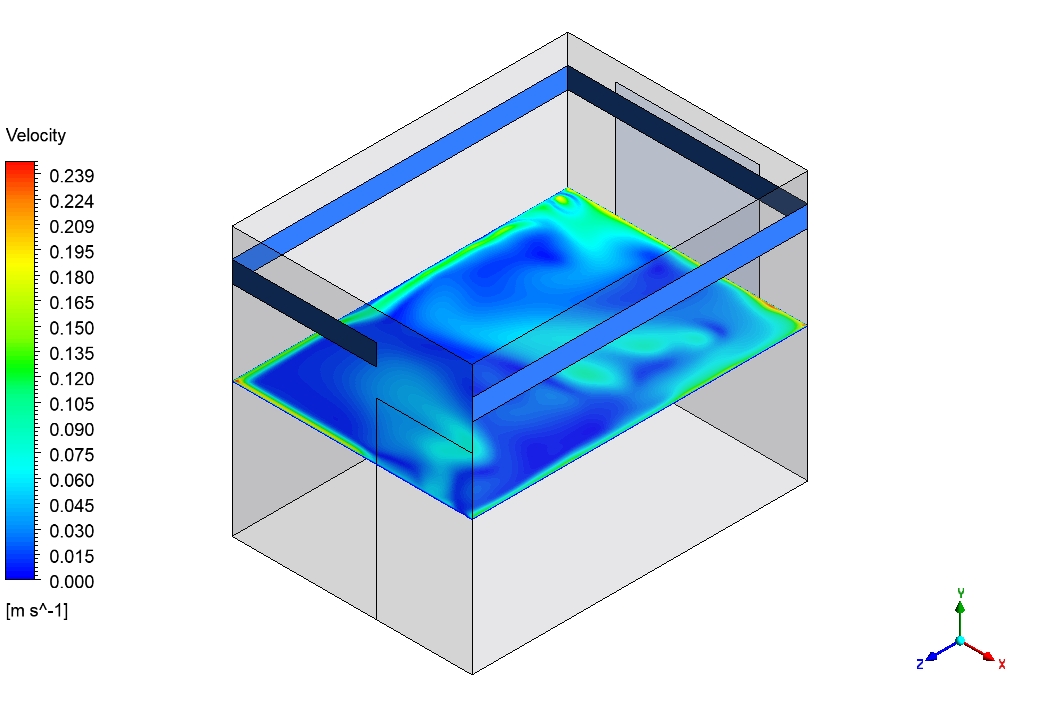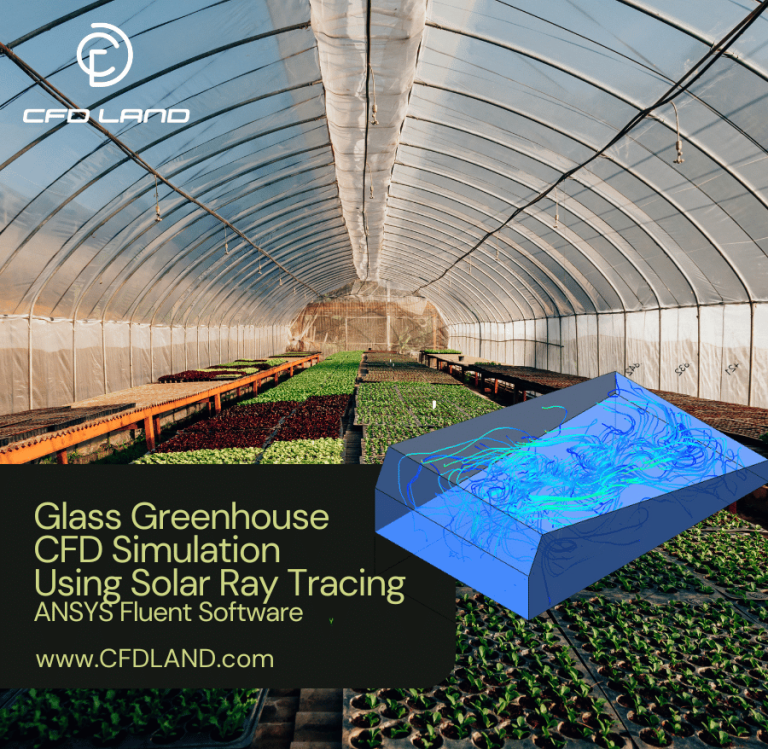Room Ventilation By Cooling Duct CFD: A Fluent HVAC Tutorial
Room Ventilation By Cooling Duct CFD: A Fluent HVAC Tutorial
- Upon ordering this product, you will be provided with a geometry file, a mesh file, and an in-depth Training Video that offers a step-by-step training on the simulation process.
- For any more inquiries regarding the product, please do not hesitate to reach out to us at info@CFDLAND.com or through our online support assistant.
€110 Original price was: €110.€85Current price is: €85.
Ensuring proper air circulation and a comfortable temperature is the main goal of any building’s ventilation system. A Room Ventilation By Cooling Duct CFD simulation is a powerful tool used by engineers to design and optimize these systems before they are ever built. By creating a virtual model, we can see exactly how cool air from a duct will move, mix with the warmer air already in the room, and affect the overall environment. This report details a Room Ventilation CFD analysis to visualize the complex airflow patterns and temperature distribution created by a typical ceiling-mounted cooling duct, providing critical insights for designing effective and energy-efficient HVAC systems.

Figure 1: The 3D model of the room with the inlet cooling duct and outlet vent.
Simulation Process: Modeling the Room Ventilation Fluent Simulation
The simulation was performed in ANSYS Fluent using a 3D model of a standard room. A high-quality structured mesh was used to ensure the calculations are accurate and reliable. The cool air enters the room from the inlet duct at a velocity of 5 m/s and a temperature of 290 K (17°C). To accurately predict the turbulent and swirling nature of the airflow, the industry-standard k-epsilon (k-ε) turbulence model was used. This model is well-suited for Room HVAC CFD simulations as it effectively captures the large-scale mixing that governs how the cool air spreads throughout the space.

Figure 2: Grid generation by ANSYS ICEM for Room HVAC System CFD Analysis
Post-processing: CFD Analysis, How a High-Speed Jet Creates Room-Wide Comfort
The simulation results provide a clear and fully substantiated story that begins with the inlet duct, which is the “cause” of all air movement and cooling. The Cooling Duct CFD model injects a jet of cool, high-velocity air into the room. The velocity contour in Figure 2 is the visual proof of this cause. It shows a concentrated jet of fast-moving air (red, at 5 m/s) shooting out from the duct and traveling across the ceiling. This jet has high momentum, meaning it has the force to push its way through the still, warmer air in the room. This initial jet is the engine that drives the entire ventilation process.
This powerful jet has a direct and crucial “effect” on the entire room’s environment: it creates large-scale circulation. As the high-velocity jet moves, it pulls in, or “entrains,” the surrounding stagnant air. When the jet hits the far wall, it is forced to turn and flow downwards, creating a massive circulation loop. The streamlines in Figure 3 perfectly illustrate this effect, revealing a large, dominant vortex that occupies the entire room. This giant loop acts as a conveyor belt, picking up the cool air from the duct and actively mixing it with the warmer air in the rest of the space. The final result of this mixing is the temperature distribution seen in Figure 4. The temperature is lowest (light blue) along the direct path of the jet and gradually becomes warmer (green/yellow) as the air circulates and mixes. The most significant achievement of this Room Ventilation Fluent analysis is the clear demonstration of how the high-momentum jet from the cooling duct (the cause) generates a room-scale recirculation loop (the effect), which is the critical mechanism that governs the distribution of cool air, prevents stagnant hot spots, and ultimately creates a uniform and comfortable thermal environment.

Figure 3: Velocity contour showing the high-speed jet of cool air entering from the duct, the primary driver in the Room HVAC CFD simulation.
We pride ourselves on presenting unique products at CFDLAND. We stand out for our scientific rigor and validity. Our products are not based on guesswork or theoretical assumptions like many others. Instead, most of our products are validated using experimental or numerical data from valued scientific journals. Even if direct validation isn’t possible, we build our models and assumptions on the latest research, typically using reference articles to approximate reality.
Yes, we’ll be here . If you have trouble loading files, having technical problems, or have any questions about how to use our products, our technical support team is here to help.
You can load geometry and mesh files, as well as case and data files, using any version of ANSYS Fluent.
€195 Original price was: €195.€155Current price is: €155.

€175 Original price was: €175.€115Current price is: €115.

€195 Original price was: €195.€135Current price is: €135.

€130 Original price was: €130.€115Current price is: €115.

€320 Original price was: €320.€175Current price is: €175.

€240 Original price was: €240.€115Current price is: €115.



















Reviews
There are no reviews yet.